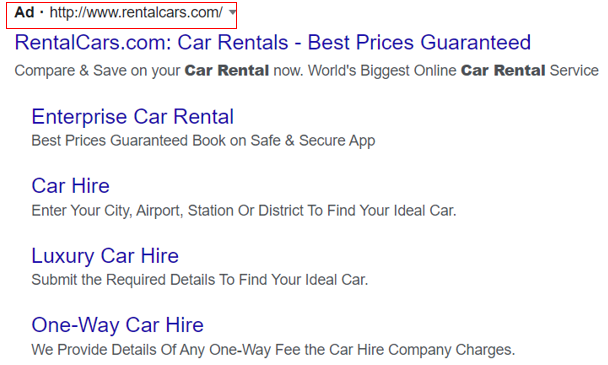Wondering which practice, between SEO and SEA, would be more useful for your website? Why not combine the two? Of course, each of them has a cost. Because even if you hear that SEO is “free”, you will often have to pay a specialist to develop a winning strategy. On the SEA side, you will pay the search engine for the clicks on your ads. It is therefore understandable that you want to make a choice between the two practices. Yes, but… It is not necessarily the best option because you should know that SEO and SEA can reinforce each other.
Concretely, thanks to the SEO/SEA synergy, you can:
SEO or Search Engine Optimization: in short, it is the set of techniques aimed at improving the positioning of a website in the results pages of search engines (SERP). It is also called “natural referencing” because here, it is not a question of “paying” the search engines to perform on one or another keyword. Instead, you apply the best practices, both at the semantic and technical levels, to please the search engines as much as the Internet users.
The SEA or Search Engine Advertising: you got it, “advertising” therefore it’s ads, paid advertising. So how does it work? When you do SEA, you create campaigns around keywords. These campaigns are composed of ads that are likely to appear in the SERPs when a user types in one of the keywords you have defined. The ads look like this:
There is no charge for the ad to be displayed, but when a user clicks on it, you pay the search engine the value of the keyword that was typed. The price of the keyword depends on several factors, such as the level of competition or the relevance of your ad.

Managing SEA campaigns gives you access to a lot of valuable information such as
Have you thought about using this information for your SEO strategy? This is a first good practice. Thanks to SEA, you will be able to see which words generate impressions, clicks, or even conversions. Now, what if you selected the best-performing ones to work on them in SEO as well?
What’s the point? Once your SEA budget runs out, it becomes impossible to run your ads. In SEO, if the search engine deems your page relevant to the user’s search, you’ll be likely to be shown at any time.
Tip: you can link your Google Ads and Google Search Console accounts. In the “Reports” => “Predefined reports” => “Basic search” => “Commercial links and natural results” section of your Ads account, you will then have access to a table containing information related to both Ads and natural search results. You can easily compare elements such as the number of clicks in SEO and SEA on the different keywords, but also see the combination of both: perfect for a well-combined strategy.
Looking for maximum visibility? Then note that being in the top position in both SEA and SEO brings more traffic. A 2011 Google study showed that 89% of clicks on SEA ads are complementary to organic clicks. So forget the stories of cannibalism between SEA and SEO.
In addition, the way people look at a web page has changed. Eye-tracking studies have shown that the golden triangle (which refers to the fact that the gaze is particularly attracted to the upper left corner of the pages), has given way to a scan that is more top-down. So if you appear on the first page, even under the first organic result, users are highly likely to click on your ad.
Also note that if your ads appear in the organic results, in the paid ads, and in the shopping ads, you will be present on multiple spots at once and therefore on a large part of the results page. Which makes you leave less room to the competitors.

An SEO/SEA strategy adaptable to your budget and resources
SEO and SEA strategies do not work in the same way, and that’s good. While one requires a lot of reactivity and short and punchy ads, the other requires a fairly substantial investment in terms of time.
As we know, an SEO strategy will take several months to settle and bear fruit. The main concern of search engines is to provide Internet users with the most concrete and reliable answers possible. To do this, they must be able to understand the content of your site and determine if you are legitimate in your field.
It is therefore important to write structured, consistent, and value-added content. It will also be important to take care of the structure of your site and its various technical elements such as the cleanliness and the lightness of the code for example. Creating a website that performs well from an SEO point of view can therefore quickly represent several months of work for the SEO expert, developers, and writers.
But don’t panic, an SEO strategy can be elaborated differently depending on the budget and resources you have. For example, if you don’t have enough copywriters to rework your entire site, you may decide to focus on the most important pages first. The same goes for development resources, if you are short of time or staff, you can start by treating the most critical points and then move forward little by little. Nothing is set in stone.
What about SEA? Unlike an SEO strategy, a SEA campaign can be quickly created and even instantly distributed. As long as your ads are relevant, launching a SEA campaign can allow your site to appear more quickly at the top of the search results (in the part dedicated to paid ads). You can then attract more people to your site more quickly.
With SEA, you can also decide to boost your site’s appearances only during certain periods of the year or for events and then pause your campaigns if you don’t want to invest all year long. Long story short, SEA allows you to have quick results and to quickly perform on awareness, while SEO takes more time but allows you to achieve a sustainable strategy.
You can use the learnings from your SEA campaigns in your SEO strategy, but also the other way around. Indeed, thanks to Web Analytics tools, you can analyze in detail the traffic of your site and see, for example, what the average age of visitors is, where they come from, what their gender is, or who converts the most.
A wealth of information that you can then use in targeting your SEA campaigns. In SEO, you can’t choose when and for whom your site appears in the SERPs. In SEA, however, you can decide when your ads will be shown and who you want to target. It is also possible to exclude certain groups of people or locations.
So if you have noticed that your site works particularly well with certain people, it will be particularly interesting to refine the targeting of your ads on them. This will prevent you from spending your budget on an unqualified target that does not generate a lead.
As explained above, when someone clicks on one of your SEA ads, you pay the price of a click on the keyword that was typed into the search bar. Google determines the cost per click (CPC) by several factors and not everyone pays the same price for their keywords.
The primary goal of the search engine is to provide the most useful answers to the queries of Internet users, it will look at several aspects to determine if your ad is legitimate:
Google then assigns a score between 1 and 10 to your ad, which will influence the cost per click. It is possible to check in your Ads account if the score of your ads is on average. Then, it is up to you to improve your ads and this is where SEO comes into play.
For example, in terms of semantics, if Google’s robots notice the use of the same keywords in the ad and in its landing page, they will consider it more relevant. Also note that a page with abundant content will, in general, be better considered than a page without text. Elements such as the loading time of the landing page, the richness of the semantic field, or the ease for the robots to understand the different elements of your page are also important.
Finally, these are all elements to consider when developing an SEO strategy. So, the more your site meets Google’s SEO criteria, the more likely the engine will improve the Quality Score of your ads. Do not hesitate to create specific pages related to your ads to have a maximum correlation between the two.
This is what motivates SEO and SEA experts to work together, as is the case at Universem.
You want to set up a strategy mixing both techniques?
Don’t hesitate to contact us.
We believe more than ever in the synergy between SEO, SEA, and Analytics and we pride ourselves on the fact that our experts work hand in hand.